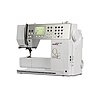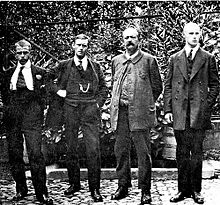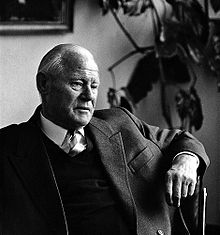| Construction | Series | Note | Image |
|
| 1986–1989 | Model 1130 | First computerized Bernina with fully automatic one-step buttonholes and stitch memory |  |
| 1989–1998 | Model 1230 | Model with expanded memory capacity and fully automatic one-step buttonholes, including eyelet buttonholes |  |
| 1993–1998 | Model 1630 | Top model: 9mm stitch width, over 400 stitch patterns, monograms, five alphabets, sewing in 16 directions possible |  |
| 1998–2002 | Artista 165,180 | Top model with customized pattern selection software for customer-specific settings, optional embroidery module, conversion of scanned templates to embroidery designs |  |
| 2001–2002 | Activa 145 | Simple compact sewing machine: Computerized; individually adjustable memory for stitch patterns, buttonhole repeat, stitch library, patchwork presser foot |  |
| 2002–2006 | Artista 200 | World's first sewing and embroidery computer: Microsoft Windows operating system, CD-ROM drive, LCD display, more than 850 stitches, programmable function key, memory function for stitch combinations and embroidery designs |  |
| 2004–2006 | 440QE | World's first sewing computer with Bernina Stitch Regulator system for consistent stitch lengths at variable sewing speeds, especially for quilters [37] |  |
| 2004 | Artista 640 | Advanced sewing computer: Extensive utility and decorative stitch programs, optional embroidery module with built-in embroidery software and optional BSR system |  |
| 2006 | Artista 730 | High-end sewing and embroidery system: Utility and decorative stitches, embroidery designs, many automatic settings such as thread cutter, touchscreen, BSR system, CFL light. Optional embroidery module. |  |
| 2008 | Model B830 | World's biggest and fastest sewing and embroidery system for home users: 1100 sewing stitches/min, 1000 embroidery stitches/min, extra-large bobbin (40% more capacity than before), fully automatic needle threader, 360° multidirectional sewing, 7-inch TFT screen, especially bright working area (30 LED lamps), more than 1000 stitch patterns, 150 pre-installed embroidery motifs by international designers |  |
| 2009 | Model B820 | Similar to the B830, but without embroidery functionality (not upgradable) or sideways feed (multidirectional sewing), and with a smaller screen and fewer stitch patterns |  |
| 2011 | Model 580 | Sewing and embroidery machine, top model of the Bernina 5 series: 227 stitches, of which 186 decorative stitches, optional embroidery module, large TFT touch screen, memory function, embroidery function integrated and 100 embroidery motifs |  |
| 2012 | Model 780 | Sewing and embroidery machine with Bernina dual transport, Bernina 9 gripper, large embroidery module, BSR, 1306 stitches, 130 integrated embroidery patterns, including sewing consultant and tutorial, top model of the Bernina-7 series |  |
| 2014 | Model Q 24 | First Bernina long-arm quilting machine with 24-inch free arm, stitch regulation via integrated BSR sensors, 2.200 stitches per minute, designed for use on a quilt frame of 3,55x1,2 m (length x width), installation at the parent plant in Steckborn, until now, Bernina has only been producing household sewing machines with the Q 24 model and the smaller Q 20 to a new, semiprofessional customer segment, the so-called prosumer. For the long-arm quilting machines, a new assembly line was set up in the Steckborn headquarters. |  |
| 2015 | Model 790 | Further development of the B 780 with new gripper (in the sister model B 720 for the first time also available with 5.5mm stitch width), adaptive thread tension, embroidery module, embroidery designer and BERNINA stitch regulator. [38] |  |
| 2018 | Series 4 | Bernina launches the 4 Series. The compact sewing machine models are equipped with the Bernina hook. |  |
| 2020 | L 850 and L 890 | With the Bernina L 850 and L 890, Bernina launches two overlockers with air threader, completely developed in Switzerland. The most important feature is the Bernina One-Step air threader: with a brief press of the foot pedal, the thread is guided through the machine by air, and the looper automatically moves to the correct position. |  |
| 2024 | Model 990 | Sewing, embroidery and quilting machine equipped with scanner, camera, touch screen and laser for placing motifs. Space to the right of the needle of 356 mm, maximum sewing speed of 1200 stitches per minute, embroidery hoop with a size of 410 × 305 mm (length x width). [3] [2] |  |





























